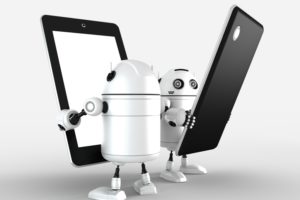It is interesting to observe how leading brands are indeed making use of the latest tech offerings such as augmented reality, facial recognition and so forth.
Also, brands are turning to the power of technology in order to attract, engage and retain customers in new and also innovative ways.
Brands are indeed embracing technologies such as gesture control, hybrid cloud computing, Internet of Things (IoT) and also machine learning. One can have a greater focus on new as well as more sophisticated ways in order to reach consumers and are also more willing to participate in marketing efforts in order to gain greater social connection, or product and service value.
Here are leading global brands making use of digital capability rather creatively in order to attract more customers and also activate their ad campaigns.
1. OMO’s smart peg
Washing detergent brand, OMO, had indeed recently partnered with J Walter Thompson in order to launch ‘Peggy’, a smart peg which features light, humidity and temperature sensors, along with no doubt a Wi-Fi module, in order to provide consumers with information on the best time to do the washing according to various weather indicators.
The peg is synced to a user’s mobile phone and also uses push notifications to update consumers of these changes in weather conditions. It also features a USB charging port and long life in-built battery.
2. Tesco’s face-scanning technology
British multinational chain, Tesco, has indeed created headlines when it did proudly announce the installation of face-scanning technology at several of its petrol stations, thus personalizing advertisements to individual customers once they tend to reach the cash register.
The high-tech ‘OptimEyes’ screens do make use of a camera and facial recognition software in order to identify a customer’s gender and approximate age, thus show advertising tailored to their demographic.
3. eBay and Myer’s first virtual reality shop
Making the grand reveal in partnership with Myer, eBay did launch new VR technology that does allow Australian customers to browse more than 12,500 products thus making use of eBay’s new gaze recognition technology, Sight Search.
4. Cherry Ripe’s OOH displays
Facial recognition, audience insights data and digital out-of-home were indeed brought together in Mondelez’s Cherry Ripe time-targeted OOH advertising campaign, which was rather displayed at petrol stations managed by Val Morgan Outdoor.
The technology was meant to tap into data in order to identify when the target audience is most likely to be paying attention to the screen while at the petrol pump, and also combine with Val Morgan’s real-time audience measurement system in order to determine if the viewer is within that target demographic, and this is so before serving the ad accordingly.
5. Heineken’s interactive beer bottle
Heineken’s Ignite concept has created headlines with its interactive beer bottles fitted with LEDs and motion sensors much designed to light up during a partygoer’s night out.
With the help of eight bright LEDs, an 8-bit microprocessor and an accelerometer, a customer’s emotions can also trigger certain effects that light up the whole bottle, like cheering or taking a swig. The effects can indeed also be remotely activated and also controlled via software and this way a light source can be synchronized to the music.
6. Pepsi’s interactive drink bottles
During the 2014 World Cup, Pepsi did run a football-specific augmented reality (AR) campaign. It has indeed successfully created 250 million interactive cans where users can play a football game with the world’s five leading players. You may like : Innovation Trends in 2018
7. Ikea’s augmented reality interior designer
The global chain focused upon augmented reality app that works like a virtual interior designer and does allow customers to visualize 3D versions of its furniture in their homes.
8. Kit Kat’s interactive chocolate bars
The mobile app, Shazam, recently did partner with Nestlé for new marketing campaign thus enabling customers to visually interact with their KitKat chocolate bars.
9. Loreal’s makeup genius app
L’Oréal’s ‘Makeup Genius’ app launched in Australia not only allowed women to virtually try on its cosmetics products thus making use of augmented reality technology.
10. Vivid’s 3D facial recognition installation
Sydney’s creative light festival Vivid Sydney did decide to engage participants on a whole new interactive level with Intel’s new 3D facial recognition technology.




